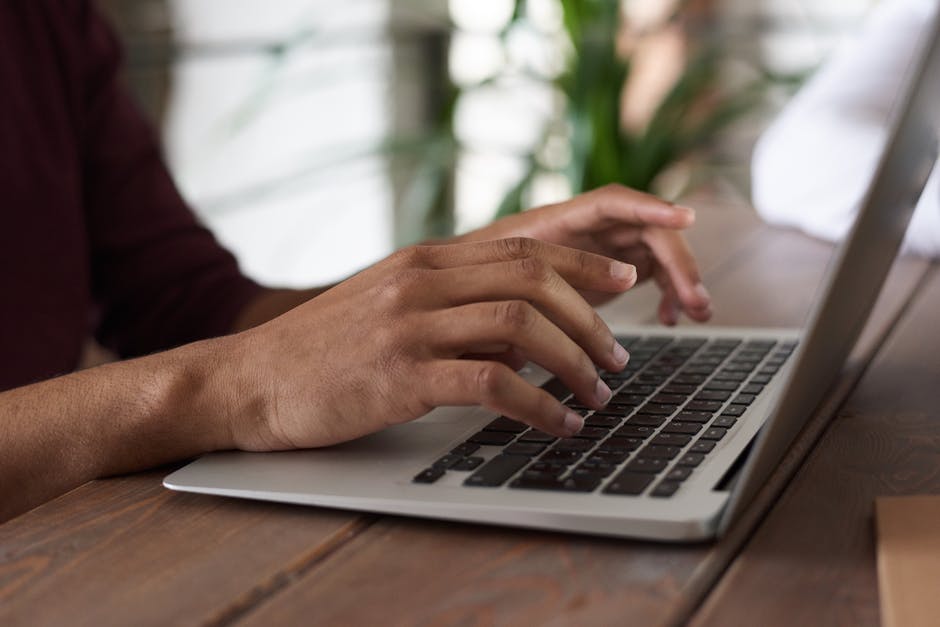Apple’s MacBook Pro series has the highest reliability of any brand of laptop. That doesn’t mean they never have problems though.
Any kind of technology, no matter how reliable, will run into issues on occasion. While some problems need to be serviced by Apple, there are lots of things that you can fix yourself.
Let’s look at 10 common problems with MacBook Pro laptops and what you can do to correct them.
Laptop Shutting Down Suddenly
If your MacBook Pro is shutting down suddenly when it’s running on battery power, there are a few things that could be causing it. First, check to see if the battery is charging when you plug the laptop in.
When you plug the machine in, the battery status icon in the menu bar should change to a lightning bolt to indicate it’s charging. If that’s not the case, there could be a problem with the AC adaptor or the power connector on the laptop.
If the battery looks okay, try restarting your laptop immediately after it boots up after the shutdown. This will run system clean-up scripts that could resolve the issue.
If neither of those fixes work, try resetting the PRAM and System Management Controller (SMC). These components maintain certain low-level functions on the Mac and if they’re corrupted, it can lead to various issues.
Blank Screen at Startup
If your MacBook fails to start up and all you see is a blank screen, it usually means an app or a system function froze during startup. Press and hold the power button for a few seconds to force the laptop to shut down then try powering it on again.
If the problem persists, try starting your laptop in safe mode. Safe mode only loads the parts of macOS that are necessary to start the system. None of your apps or other login items will be started.
If the laptop starts up in safe mode, something that normally loads at startup isn’t working. You can figure out what by adding startup items one-by-one until you find the one that causes the laptop to freeze.
An External Device is Not Working
If an external device like a hard drive, microphone, printer, or webcam isn’t working, there are a few possible causes. First, check all the connections to make sure it’s not as simple as a loose cable.
If you have access to another computer, try plugging it in there and see if it works. If not, it’s likely the device itself that’s not working, not a problem with your Mac. If it works there, try connecting a different device to your Mac to see if the port might not be working.
Try restarting both the device and your Mac then reconnecting it. Something rebooting everything will sort out the problem.
If all those tips don’t solve the problem, try resetting the laptop’s PRAM and SMC. They can also affect external devices.
Sound is Cutting Out
Sound not working on Mac is another problem that’s often caused by PRAM and SMC issues.
But before you reset the PRAM and SMC, double-check the volume settings and make sure you don’t have your speaker muted (and the volume is high enough to hear). If those settings are okay, try a different app to make sure the sound issue isn’t confined to a single application.
If the sound doesn’t work in any apps, try the PRAM and SMC reset process.
MacBook Pro is Running Slowly
If your Mac is starting to run slowly, there are a few potential reasons. Before doing anything else, try restarting the laptop. When you restart, it cleans out your RAM and the system runs some maintenance procedures that will quite often sort out the performance. This is especially true if you haven’t restarted for a long time.
If a restart doesn’t help, check to see how many apps are being loaded when you log in. You’ll find this information in the “Users & Groups” page in System Preferences. Loading a lot of apps when the system starts will slow things down so remove anything that isn’t necessary.
Check your hard drive or SSD storage to see how much free space you have. If the drive is nearly full, it can also slow the system down. If it’s getting full, look for anything you can delete or archive to an external drive or the cloud.
Check to see if there are updates available for your installed apps and macOS itself as well. Sometimes these updates will fix bugs that could be causing the system to run slowly.
Keyboard Problems
The last few generations of MacBook Pro laptops have had a new keyboard design that seems to be more prone to problems than the previous ones were. This usually manifests itself with certain keys either failing completely or not working intermittently.
It’s usually keys like the space bar, E, S, and any others that get a lot of use. In most cases, this needs to be fixed by Apple but you can sometimes deal with the problem yourself with a simple can of compressed air.
The problem is sometimes caused by dust or other debris getting under the key. To clean it out with a can of air, follow these steps:
- Hold the laptop at a 75-degree angle
- Spray the keys with compressed air using a side-to-side motion
- Rotate the Mac on its right side and spray it again
- Rotate it to its left side and repeat the process
Flashing Question Mark at Startup
If you get a blank screen with nothing but a flashing question mark icon in the center, it means your Macbook Pro isn’t able to find the operating system files it needs to start up. This could mean you’ve had a drive failure in the laptop or it could mean one or more important files were deleted somehow.
If you have an external backup of your system, try booting from that and see if it works. Plug the external drive into your laptop and hold the Option key when you power up. Hold it until you get a screen that lets you select which drive to boot from and choose the external hard drive.
If you don’t have a backup, try using the System Recovery option from that same screen instead. It lets you run some diagnostics that will confirm if there’s a problem with the drive.
Blue Screen at Startup
A blue screen at startup means something that’s loading at login is incompatible with the system in some way. This problem takes some trial and error to figure out, similar to the blank screen issue we’ve already covered.
Start your laptop in safe mode and disable all your login items. Restart the system and let it come up normally then enable those items one-by-one, restarting after each one, until you find the culprit.
Unresponsive Apps
Sometime apps will crash and become unresponsive. When this happens, you often can’t close the app or do anything with it at all.
To force quit the app, click on the Apple menu at the top left and then Force Quit. You’ll get a window with a list of all the open apps. Click on the one that’s frozen and then click on the Force Quit button.
Alternatively, you can hold the Option key and right-click on the app in your dock. This will open a menu that has the Force Quit option for that specific app.
When you force-quit an app, you’ll lose any information that you hadn’t saved but since the app is frozen, you would have already lost it anyway. Make sure you save your work regularly.
Spinning Beach Ball
A spinning beach ball means the system is running out of resources (RAM or CPU cycles) because too many things are happening at once. This is similar to the problem of your laptop running slowly but it’s a visual indication that it’s happening.
Follow the same steps we covered for the laptop running slowly in a previous section. You can also open the Activity Monitor tool from the Utilities folder in your Applications folder to see what kind of resources the apps that are running are using.
Look for any that have a particularly high CPU load and try closing them and restarting them. Sometimes a simple restart is all it takes to sort out the problem.
Fixing Common Problems with MacBook Pro Computers
Computers have got a lot easier to use over the years and don’t need the level of technical knowledge they once did to operate. It’s still a good idea to learn as much as you can about your laptop though. Troubleshooting MacBook Pro problems yourself saves time and money.
These common problems with MacBook Pro laptops are things you can try to fix yourself with the tips we’ve covered here. If it doesn’t work, you can always take your machine to your local Apple Store and have it checked at the Genius Bar but why waste that time if you can do it yourself?
Did you find this post helpful? Check out the rest of our blog for more interesting articles.


